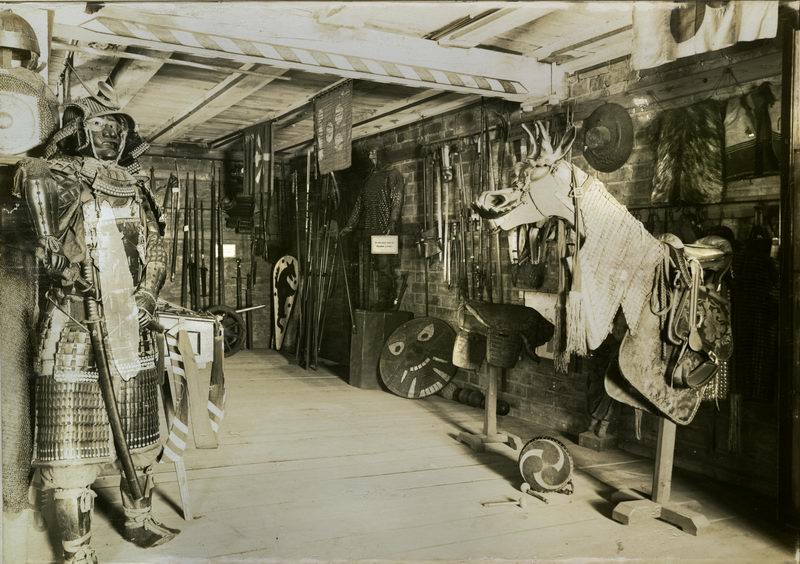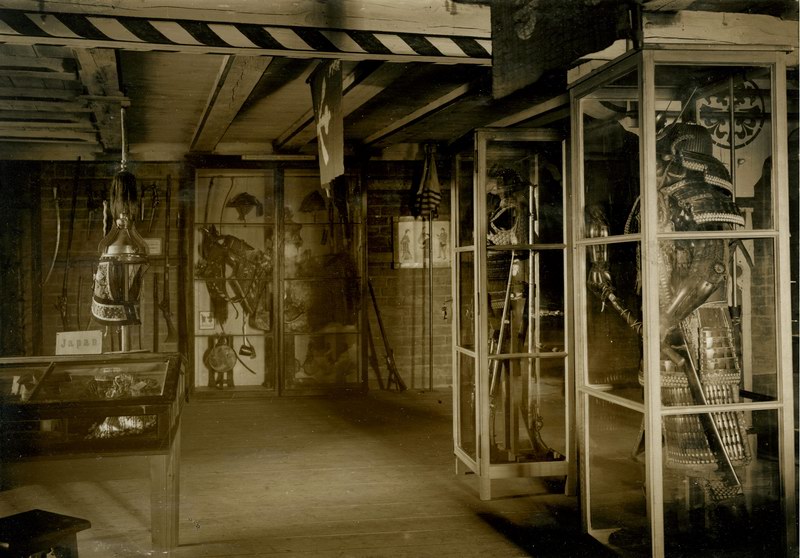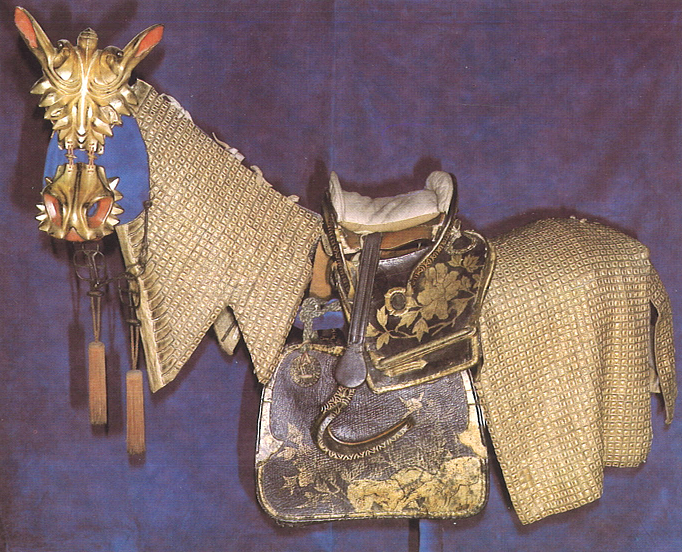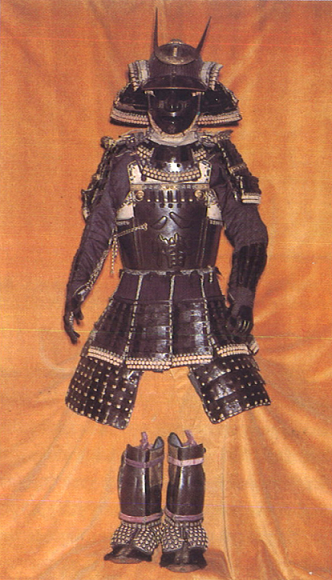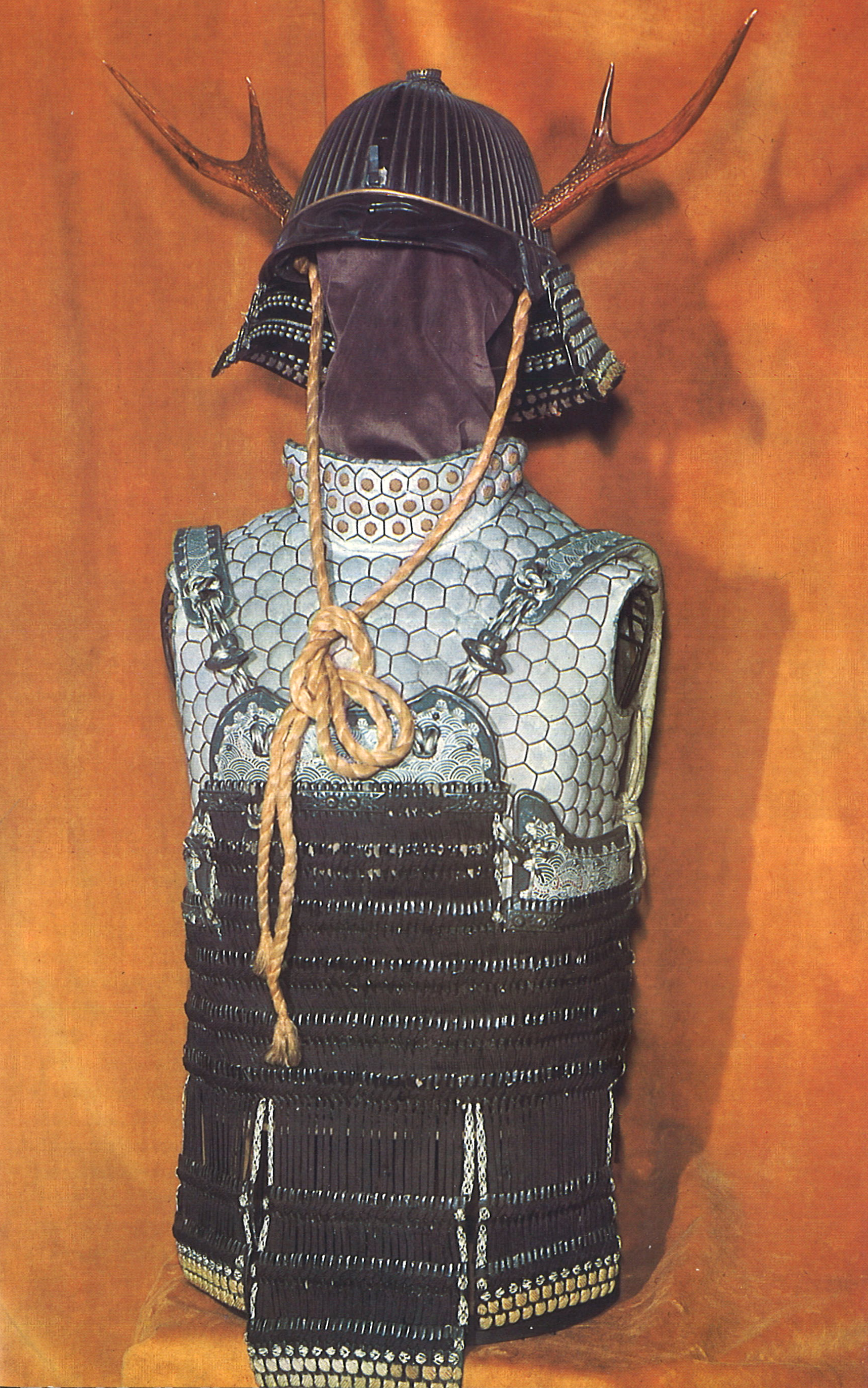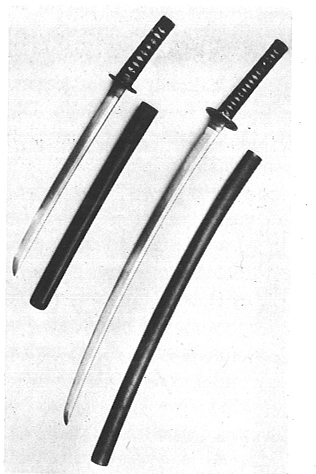The Blell collection, apart from European weapons, also comprised oriental weapons from over a dozen regions of the world. The most extensive and richest cannon was Japanese armament in the number of 58 pieces. In addition, this section was best documented by photos thanks to the photos from the Castle Reconstruction Albums, where most of its elements were captured. Its greatest ornament was a parade horse armor from the late Edo period (2nd half of the 18th and 19th centuries). It consisted of a pediment in the form of a dragon’s head, as well as a cap and a buttress made of four sheets of cotton fabric, covered with square armors made of leather. The whole armor was covered with gold, red and black lacquer. The armor was supplemented with a saddle with tybins and stirrups (abumi).
The collection also included four armor sets dated to the Edo period (1603–1868), which can be divided into two types – tosei-gosaku and kikko katabira. The tosei-gosaku armor was samurai armor composed of seven elements: a helmet, mask, breastplate, epaulettes, gloves, apron and greaves. In the medieval armor, the breastplate was made of steel or leather armorers tied together as in lamellar armorer. However, after the Portuguese brought rifles with a fuse lock to Japan in 1543, the breastplate evolved. This type of armament was divided into several types depending on the design. One of them, belonging to the collection of Blell, was an uchidashi-dō characterized by a reposed breastplate, in this case in the form of the kanji character – the god of war, Hachiman, in Japanese mythology.
Permanent exhibition of Japanese weapons in the substage of the Grand Commandery; Marienburg Baujahr 1917, photos 26–27.
The second type of armor in the collection was the kikko katabira. This body protection took on a form of a textile vest, unbuttoned at the front, on which hexagonal armorers were sewn in, connected to each other by a chainmail braid. Armors could be covered with fabric. Unlike the tosei-gosaku, it was also worn by light infantry (ashigaru) using shotguns with a fuse lock in combat.
The armor was complemented by helmets, including those used by samurai and infantry. The first group includes the suji-bachi kabuto with a ribbed bell, a winged neck and a jewel in the form of horns and a sun disc. The second one is represented by jingasa – a helmet with a wide, perpendicular brim and a cylindrical bell covered with black lacquer.
The collection also included offensive weapons. The most recognizable weapon of this type from Japan is, of course, the katana. It was a Japanese long slash weapon with a round, richly decorated handguard (tsuba) and a curved blade with a cut point with a maximum length of 75 cm. It was worn together with the wakizashi, with which it most often formed a stylistic pair. It was a type of Japanese dagger with the same structure as a katana, but with a shorter blade measuring 45 cm on average. Blell had three pairs of this type of weapons in his collection.
Another type of offensive weapon included in his collection were two examples of the aforementioned fuse rifle used by the infantry. The Japanese referred to them as tanegashima (from the name of the island to which the Portuguese landed during a storm in 1543). They differed from their European counterparts by greater weight, shorter length and rich decorations, most often in the form of incrusting the barrel with precious metals. Moreover, they were used much longer than European fuse rifles, until the end of the Edo era in 1868. This was related to the isolationism that continued at that time, which made it impossible for the Japanese to familiarize themselves with newer types of European firearms. Therefore, the fuse lock was improved by adding, among others hammer lock mechanism, thus turning it into a latch lock
In addition to weapons, this section also contained several camp items, including a horse watering ladle decorated with a swastika. Even though today Europeans associate this symbol with Nazi totalitarianism, it is one of the most popular religious symbols appearing in many cultures of the world since prehistoric times. Its name comes from Sanskrit and literally means “bringing good luck”. In Poland, you can come across it in Podhale, among other places, where it was known as the “unexpected cross” and as a sign protecting against evil, it was engraved on the ceiling beams of cottages, tools or tombstones.
In 1910 collection was gathered in the substage of the Grand Commandery at the Middle Castle. For the first few years, it did not have a permanent exhibition. It was only after the renovation of the Infirmary in 1914, that the whole of the Grand Commandery was allocated to the permanent exhibition of ancient and oriental weapons. The Japanese department as the richest has been captured in two photos. Thanks to them, it is known that the armor was in separate display cases together with helmets, cutting weapons and hand firearms. A separate showcase also had a horse armor, in which there were several helmets, a drum, bows and the ladle mentioned above. The exhibition is additionally decorated with silk war banners of Japanese princes and woodcuts.
Most of the most valuable items from this collection are exhibited today at the Polish Army Museum in Warsaw, where they were transported in September 1945 as part of the military action to secure the surviving monuments located in the ruined castle in Malbork.
(by Dr. D. Gosk)

